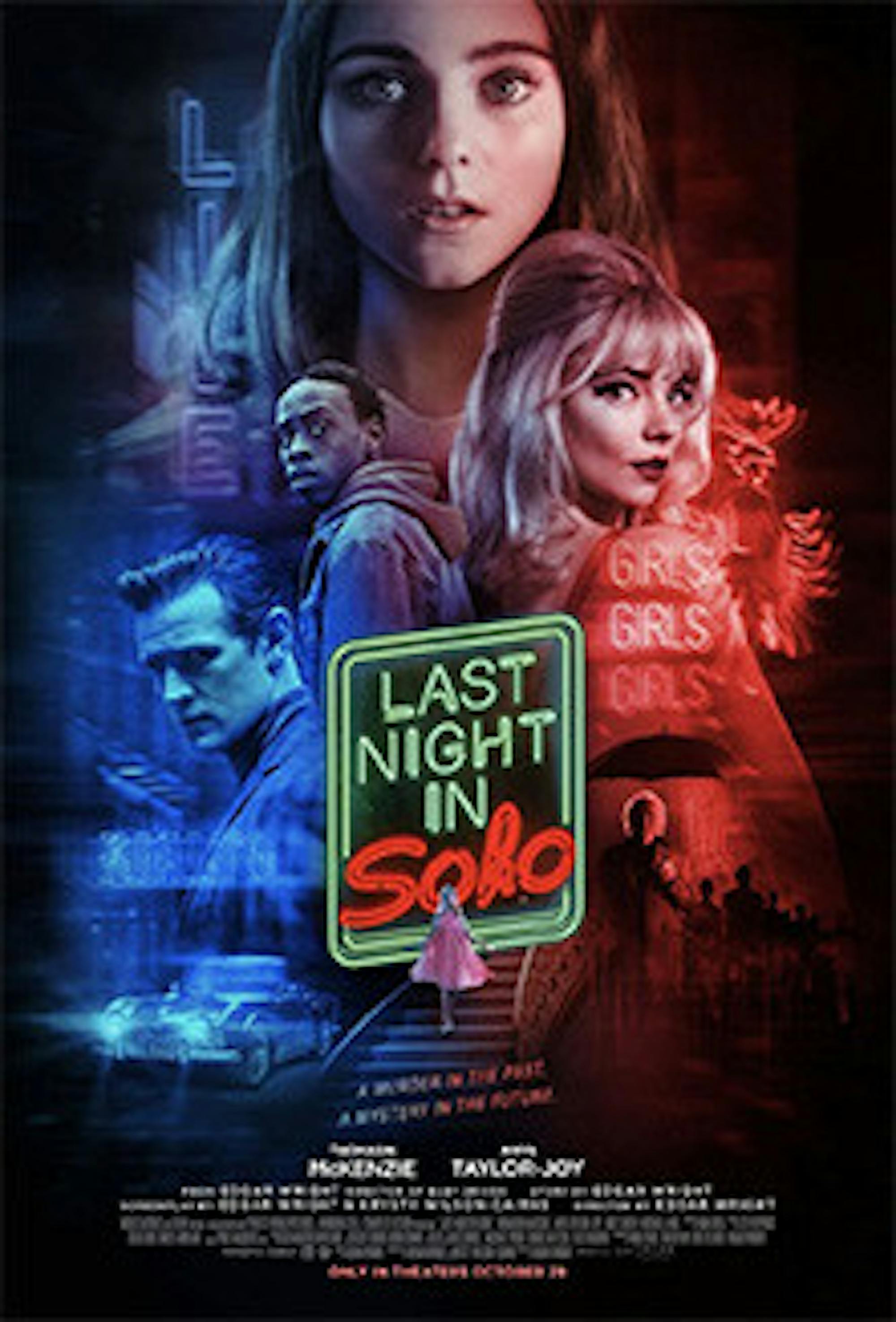The genre of horror has experienced tremendous change over the last several years, whether it be with social commentary horrors like “Get Out” (2017) or campy horror comedies like “Jennifer’s Body” (2009). Still, maybe there’s something to say for classic forms of horror, be it ghastly jump-scares or extreme psychological manipulation. These are certainly elements found in“Last Night in Soho” (2021). Though the film does nothing truly new or outside-the-box, it's an all-around enjoyable time. In using the prototypical tropes of a psychological thriller, “Last Night in Soho” grabs the viewer and doesn’t let them go. In a horror movie, that’s all one can ask for.
“Last Night in Soho” follows Eloise (Thomasin McKenzie), a student from the British countryside who comes to London for fashion school. After being verbally bashed by many of the students in her dorm, Eloise decides to move into nearby lodging being rented out by Miss Collins (Diana Rigg). During her first night sleeping there, Eloise dreams herself back to the 1960s in the form of aspiring singer Sandie (Anya Taylor-Joy). Sandy finds an agent in Jack (Matt Smith), though the relationship soon becomes deeply manipulative. The dreams start to fade into Eloise’s daily life, and she becomes increasingly more haunted by Sandie’s story.
The plot itself shows just what the film is meant to be — a psychological thriller. This is a somewhat overplayed archetype, and thus there is little novelty to be found in the film. Still, “Last Night in Soho” does a stellar job at reaching the goals of the genre. One is constantly disoriented while watching, confused as to what could come next and afraid of where Eloise’s mind may take her. The viewer is trapped within the perspective of Eloise, and thus is forced to ride along with her through the ensuing paranoia and violence. Part claustrophobic turmoil and part murder mystery, “Last Night in Soho” effortlessly confuses and distorts the narrative into a compelling psychological masterpiece.
The leading reason for the film’s success, however, is in its aesthetic and design. In fluctuating between the present day and the 1960s, director Edgar Wright took on the tremendous task of creating two individual schemes that can stand on their own, but eventually combine into one collective hellscape. Wright does this by employing every scenic tool in the book, whether through specific lighting choices or sprawling scores. For example, when Eloise is falling back into the dream of Sandie as things begin to go awry, neon colored lights flash over Eloise’s body. The joyous colors of ‘60s glam begin to represent violence and trauma. Likewise, the scoring of Steven Price makes the horror scenes seem grandiose, but never overplayed or wildly predictable. The peaceful scoring of the countryside is juxtaposed with the chaotic scoring of London. Likewise, the modern sound of Eloise’s present is juxtaposed with the eerily retro sound of Sandie’s story. In sum, it is the scene design and aesthetic choices that allow the film to make such a strong impact and to maintain the viewers attention.
The film also contains some standout performances, namely from McKenzie and Taylor-Joy. Much of the film’s fanfare comes from Taylor-Joy, straight off the hit Netflix show “The Queen's Gambit” (2020).Taylor-Joy gives a phenomenal performance as Sandie, actively embodying the trauma she faces while still maintaining an elusive and dream-like allure. Still, the biggest props must be given to McKenzie, who effortlessly leads the film and allows the viewers into her role's mind. It is through Eloise that the viewer understands the narrative chaos, and thus it is McKenzie who must coax the viewer along with her and rationalize some of her poor choices. The viewer needs to have some trust in Eloise, or they will lose interest; it is McKenzie who works hard to maintain that delicate dynamic.
That said, it is important to note that, from a plot perspective, the film often falls short. The ending is filled with holes and different workarounds which bring into question the validity of the answers provided. This, for some, is a deal breaker. For those who need a good and satiating solution to end a film, “Last Night in Soho” may disappoint. Still, the film may be more about the journey than the conclusion. The viewer leaves feeling fulfilled not by the conclusion provided, but by the experience as a whole. Thus, the plot holes are important to consider, but not necessarily completely destructive to enjoying the movie.
In sum, “Last Night in Soho” hits the psychological horror archetype, and it does it well. The film in no way reinvents the wheel or provides new commentary, but maybe that isn’t necessary for a good film. Rather, it served as a reminder of just how enjoyable horror movies can be. Horror provides a somewhat counterintuitive respite for the wandering mind, allowing oneself to get carried away in a scary or shocking narrative. Through the gore and the jump-scares, horror provides a fun and engaging viewing experience. This film hit that effect on the head, and it was simply a joy to watch.






